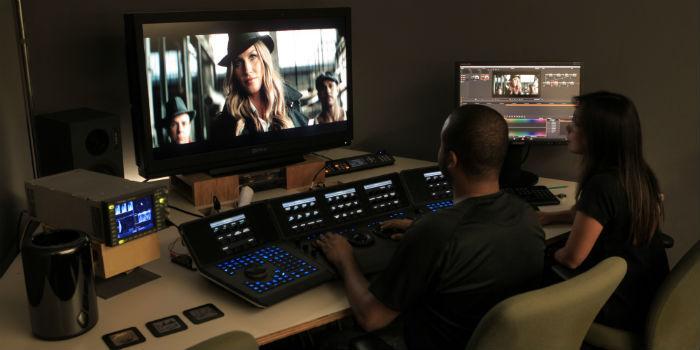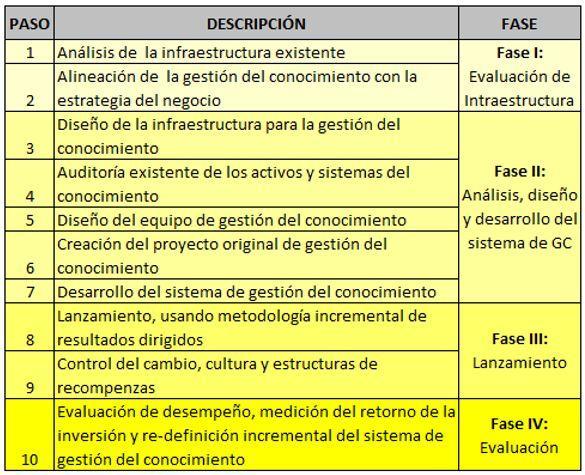 Managing the organizational knowledge necessary for the sustainability of companies is one of the main challenges that arise in organizations in the international arena.
Managing the organizational knowledge necessary for the sustainability of companies is one of the main challenges that arise in organizations in the international arena.
Boris Diaz*
This topic has been addressed by authors such as North and Kumta (2014), who highlight the relationship between the value of intrinsic employee knowledge and the importance of managing it properly. In the audiovisual industry when a collaborator has been in the organization for a long time, the accumulation of knowledge and experiences resulting from his work will be difficult to recover in a new worker even if he has a high level of training.
On the other hand, it is common to find that many organizations in the sector make large technological investments and discover that they are not being fully exploited due to the lack of knowledge transfer to the direct operators of this technology.
This situation highlights the permanent threat that exists in the industry, at a time when everything revolves around the management of information with initiatives such as Big Data and Business Intelligence, in which it is evident that it is not only about having the information, but about finding a way to take advantage of it and above all guarantee how to transform it into knowledge and protect it for use and benefit of the organization.
For this, it is necessary to review the relationship between economic and productivity results in companies and the management of intangibles; where many companies despite having quality processes, are affected by this phenomenon that afflicts organizations that compete in changing areas, where knowledge, access to information and new technologies are fundamental.
Betancur (2015), argues that intellectual capital assets can be immersed in the conscious or unconscious of employees tacitly (which resides in them) or implicitly (documented within the organization), represented even in customs or regulations. Today, knowledge management is so valued in corporate environments that concepts such as intangible assets have been regulated within the framework of international accounting standards such as IAS and IFRS, which define the conditions under which intangibles must be valued economically as assets, estimating their fair value in cases where the law so requires, as stated by Pombo (2015).
Taking into account the elements used in the definitions, the following conceptual approach is proposed:
Knowledge Management: Process by which the administration of knowledge flows is facilitated and the one that comes from the different sources of knowledge, internal and external to the organization, is transformed, in order to configure the knowledge potential of the same.
Intellectual Capital: It is the total existence of resources based on the knowledge that the company has.
Know-how: It is the experience that a person or organization has to develop their activities, whether productive, administrative, financial, commercial and / or control.
Referents such as Nonaka and Takeuchi (1999), address how knowledge was concentrated in administrative theories in search of increasing productivity in companies, leaving rigorous definitions to involve more innovative concepts, which seek to turn tacit knowledge into explicit, and in turn relate it to a level of individual, group, organizational and inter-organizational knowledge. They propose one of the most popular models that would even serve as a bridge between Eastern and Western cultures known as the Spiral of knowledge made up of four stages (Socialization, Externalization, Combination and Internalization) as can be seen in the figure Spiral of Knowledge.
Tiwana (2002), for its part, presents a model that allows in theory to design a unique knowledge management system for the different Organizations, divided into four stages: infrastructure evaluation, QM analysis system, design and development, Launch system and finally the return on investment and performance evaluation, as follows:
Table 1. Knowledge Management Roadmap in 10 Steps
The above are referents of models and administrative theories that serve together with others, as a basis for the application of an own model that fits the particular needs of each organization in the audiovisual industry. The great challenge is to find a way to integrate the positions of knowledge management and intellectual capital, so that they adapt to the particular conditions of each organization and safeguard the existing knowledge in them, in the people who make them up and who today are their main asset.
From this objective arise fundamental questions applicable individually for each organization, such as:
Are there clear policies to carry out sensitive processes of the organization, such as Pre-production, Production, Post-production, Emission / Distribution, Content Management and Archive?
How much does it affect the organization that knowledge is lost with the retirement of employees?
What are the main problems caused by the "leakage" of knowledge in the organization?
What methods can be used so that the experience and know-how of employees remains an intangible asset of the company?
What are the knowledge and experiences that could be considered as intellectual capital in the company?
Whose head are these knowledge and experiences?, Is it part of the explicit knowledge of the company?
Where and how has this knowledge been documented?
In the audiovisual industry, it is observed that knowledge has a special role since one of its most important differentiating factors is the accelerated advancement of technology. The very existence of organizations and their sustainability over time depend on the ability of the company to absorb technology and implement it in the improvement of its processes to maintain its market share and thus guarantee a sustainable competitive advantage over time.
The audiovisual market is highly dynamic, a few years ago the dominant media were indisputably radio, press and television; today there are clearly strategies around concepts such as Transmedia, Crossmedia and Industries 4.0, which account for the evolution of the industry. The dynamics of the market respond to different circumstances and different actors that are part of it.
Changes in customer and consumer needs, emerging technologies, dynamic capabilities of the competition and the industry, determine the speed with which the company can be left out of the market. Not understanding this dynamic and the importance of the knowledge embedded in it, simply guarantees the obsolescence of the knowledge, technology and service offered by the company to its target audience. This guarantees their exit from the market.
Keeping the company in competition implies understanding the dynamics of change and being part of it. For this, the human, structural and relational dimensions of Intellectual Capital are fundamental, since it allows contact between the agents of the system and the processes of the company. Likewise, it allows the transformation of information into knowledge, and from this into intelligence, facilitates the process of permanent feedback (feedback) necessary to guarantee the continuous improvement that the company requires in a dynamic market, as suggested by Chávez (2017).
In short, it is about understanding that technical expert knowledge is as important as commercial and administrative expert knowledge to guarantee the continuous improvement of processes, the insertion of technology and the permanent generation of value for customers and consumers, in a way that allows improving the image (branding), taking into account the relationship with society (social responsibility) and with the environment (environmental responsibility).
In this sense, the model to be implemented in an organization of the audiovisual industry, must integrate in a permanent spiral the necessary elements to facilitate the work of the organization managing its individual, collective and organizational knowledge to guarantee its economic, social and environmental sustainability (also legal), over time.
*Boris Díaz is an Electronic Engineer, Specialist in Technological Management and Master in Management of Technological Innovation. He has 25 years in the television and audiovisual media industry, has held various technical, administrative and now commercial roles since Era Electrónica, where he currently serves as Commercial Director.


























Leave your comment